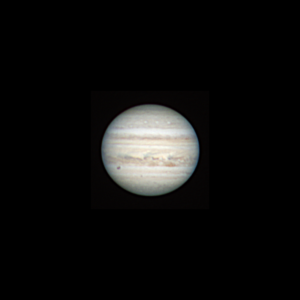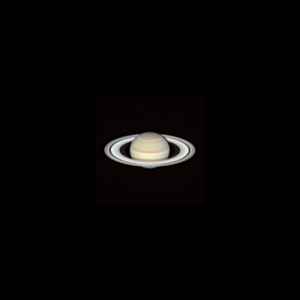Almanac data shows we are entering the cloudiest part of the year with clear skies only about 12% of the time. This makes it almost impossible to spend an hour taking a series of images necessary for asteroid position analysis. This means the PTO is left configured for planetary imaging with a temporary reconfiguration to cover a random occultation when necessary. On the night of the 2nd I was able to get several RGB sets of Jupiter but only 2 sets of Saturn before the clouds closed back in.
The dark spot on the lower left of Jupiter is the largest moon in the solar system – Ganymede. In fact, Ganymede is larger than the planet Mercury. Clouds prevented an earlier set of images that would have shown the Ganymede’s shadow as well as the GRS. As soon as Jupiter rotated the GRS out of view and the shadow left the planet, the clouds cleared.
Currently, Saturn rises only 23 minutes after Jupiter putting them close to each other in the sky as viewed from Earth.
For an explanation of caption information see exposure data.

